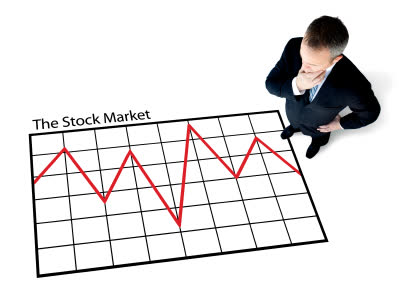Dividend Value Builder Newsletter
– Discover, Compare, and Evaluate Dividend Stocks Without Emotional Bias –
(Intrinsic Value Analysis For Over 300 Stocks)
Stock Market Risk: Analyzing and Finding Solutions


Analyzing stock market risk and establishing portfolio risk management strategies is an important part of investing. We are going to examine what causes investors to engage in behavior that endangers their portfolios value and offer risk management solutions.
Why Stock Market Risk Management is Needed
Systematic risk is the risk related to the stock market as a whole. Factors affecting the whole market might include economic growth, recessions, inflation, interest rates, currency fluctuations, etc. These factors are unpredictable yet create volatility and risk in the stock market.
Volatility doesn’t seem to bother most investors during bull markets. This is one reason investors are “lulled” into taking additional risk as markets rise. Most investors don’t realize that portfolio volatility by itself will reduce returns. In addition, as more and more people “follow the crowd” they let their emotions cause them to buy more when prices are high and sell after prices have fallen.
Another common problem is investors seeking high rates of return concentrate on higher risk stocks. Riskier stocks tend to be smaller and fundamentally weaker than the average stock. The more speculative stocks tend to lead the market up in rallies, but collapse in down markets.
Since it is impossible to predict what factors will cause the market to go up or down, an investor needs to manage the effects of systematic risk has on their investment portfolio. Here are 3 solutions to manage stock market risk.
Stock Market Risk Management Solutions
1. Establish a Maximum Portfolio Drawdown Policy
A Maximum Portfolio Drawdown policy sets limits based on probable maximum loss in which the investor sets limits to the amount of decline in their portfolio value they will tolerate. This sets planned parameters because you layout with purpose how much of your investment portfolio you can afford to lose. This reduces the propensity to make emotional asset allocation changes at the wrong time.
As an investor, you want to be sure to have money to buy investments at lower prices so determining the amount of risk allowed in the portfolio becomes analytical. This puts the focus on price, value, and planning ahead.
2. Use a Tactical Asset Allocation
The determination of long term risk is valuation. Savvy investors can take advantage of volatility by employing an active or a tactical asset allocation. This allows the portfolio manager to own more of an asset when prices are bargains and own less of an asset when prices are expensive.
History proves that when stocks are bought while valuations are low they provide higher than average rates of return in the long run. But when stocks are purchased while valuations are expensive the returns are below average over a long time period.
3. Develop Value Rules and Strategies
I have put in writing 34 Investment Rules and Strategies that guide my investment philosophy. Having a written policy gives me something to review and stay focused on what is important in the long run. You might be amazed how helpful it is to first develop your rules and strategies, and then periodically review them.
Summary
None of us knows what factors will cause the stock market to go up or down. That is why the stock market is uncertain. Since we can’t control stock market risk, we have to implement risk management solutions that put the odds of investment gains heavily in our favor.
Related Reading: 5 Portfolio Risk Management Strategies
Minimize Large Portfolio Drawdowns
Invest With Confidence in Less Time - Manage Your Portfolio Without Behavioral Errors
